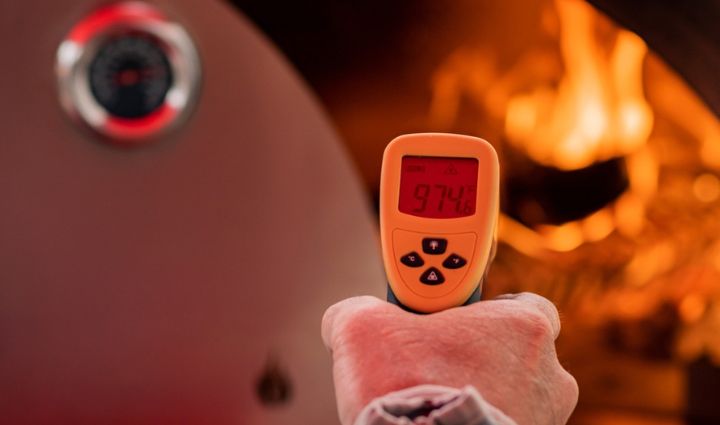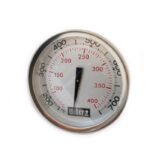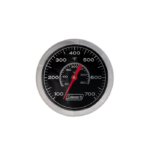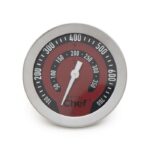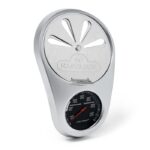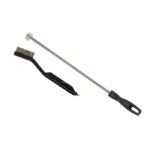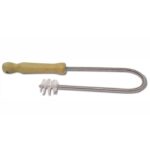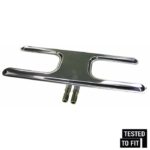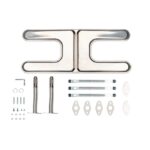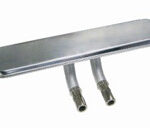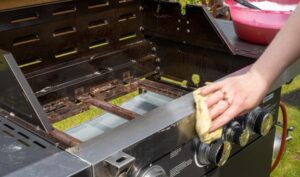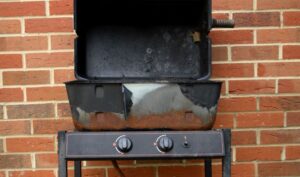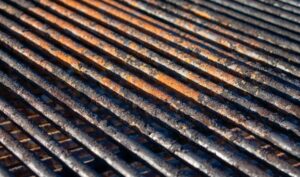The Complete Guide to Troubleshooting Gas Grill Issues is your source for step-by-step instructions on how to diagnose and fix the most common gas grill issues. Whether your grill isn’t heating properly, won’t stay lit, or simply has rusty parts, we’ve got the answers you need to get your gas barbecue firing on all cylinders.
While a hot grill is generally a good thing, a gas grill that is going above and beyond the temperature setting you’ve selected can cause problems while cooking.
From drying out your food to unwanted charring, or even the unfortunate “charring the outside without heating the center” situation, when it comes to a gas grill, you want the goldilocks heat setting: just right.
In this section of the Complete Guide to Troubleshooting Gas Grill Issues, we’ll help you figure out why your gas grill is too hot and how you can fix it. Keep reading to learn:
- What constitutes “too hot”
- The reasons why your grill is getting too hot
- How to fix a gas grill that is too hot
Let’s get cooking.
Is Your Gas Grill Too Hot?
So, what does “too hot” mean? If your grill is getting “too hot”, that means it’s exceeding the temperature setting you are selecting. For example, if you are setting your gas barbecue to a low temperature setting like 250F but your barbecue is reaching temps of hitting 400F or higher, your grill is getting too hot.
These are the generally agreed upon ranges across most manufacturers:
- Low and slow (200°F to 250°F)
- Low (250°F to 350°F)
- Medium (350°F to 450°F)
- High (500°F+)
GRILL SPOT TIP: Regardless of the number of BTUs, most gas grills max out around 600-700°F.
Why Is My Propane Grill Too Hot?
Grill temperature can be impacted by many things, such as:
- Grill age: Due to general wear and tear, older grills—especially those that haven’t been well-maintained—may have a harder time getting up to or maintaining the right temperature. Giving an older grill a thorough cleaning or replacing key parts may help restore your grill’s temperature accuracy without requiring you to replace your entire barbecue.
- How well the grill is maintained: Grill maintenance is important because it helps you keep your barbecue performing at its best—everything works better when it isn’t clogged with grease and food particles (or spider webs) or struggling with deteriorating components. A thorough cleaning may be all that’s needed to correct your grill’s temperature issues.
- The outside temperature: In the summer, a grill can get up to temperature and maintain that temperature more easily than in the winter. If your gas grill is too hot in the summer heat, try setting it to a lower temperature than usual.
How To Fix a Gas Grill That is Too Hot
If your gas grill is too hot, even when the flames are set to low, try these four fixes:
1. Adjust the burner air shutters
This is a simple fix and one you should check first. If your grill is getting too hot, you may just need to adjust the air shutters on the burners. Too much (or too little) air flow into your grill burners can impact temperature. Try playing around with your air shutter(s) to see if this can improve the temperature accuracy in your grill.
2. Confirm your temperature gauge is accurate
You have likely already checked this if you’ve made it to this page, but confirming the accuracy of your temperature gauge is the “have you tried turning it on and off?” version of troubleshooting grill temperature issues. Confirm that your built-in thermometer is getting the right reading by checking it with a second (or third) thermometer before proceeding to the suggestions below.
GRILL SPOT TIP: The temperature you see on the lid thermometer refers to the ambient air temperature inside the grill. Ambient air temperature is generally significantly lower than the temperature right at the grill grate—where your food gets cooked—which can be 75 to 100 F higher. Use a probe thermometer to check your grate surface temperature.
Shop for temperature gauges:
3. Check burner tubes for obstruction and alignment
If the flames are uneven, jumping, or blowing themselves out, you should examine the control valves and burner tubes for obstructions and proper alignment. If your burner tubes are not obstructed or out of alignment, you should see even blue flames coming out of the burners. Realign any misaligned components, clean out any obstructions (and protect against future obstructions while you’re at it), and then fire up your grill to see if the issue is resolved.
4. Look for corrosion on your burners
While burners are typically well-protected by heat plates and proper maintenance, they will eventually break down with regular use. This can cause problems with temperature consistency and flare-ups. If your grill is still getting too hot after trying all of the solutions above, check that your burners haven’t corroded. If they have, they’re easy to replace:
- Remove the grill grates and heat plates and set them aside.
- Remove the burners. Depending on your grill configuration, this could mean removing a cotter pin or unscrewing a few screws to get them out.
- Clean the burner box.
- Line up the new burner air intake, slip the new burner onto the gas nozzle, and position the burner in the burner box.
- Resecure the burner by screwing it onto the burner box or reattaching the cotter pin.
- Replace the grill grates and heat plates.
Conclusion
If your grill is too hot, it can ruin your grilling experience. Thankfully, there are several easy fixes you can try:
- Adjusting the air shutters on your burners to get the optimal oxygen to gas mix
- Confirming that your built-in temperature gauge is working properly
- Cleaning and realigning your burners and control valves if they are obstructed or misaligned
- Replacing corroded burners
Learn more about different grill problems, what causes them, and how to solve them in our Complete Guide to Troubleshooting Gas Grill Issues.

